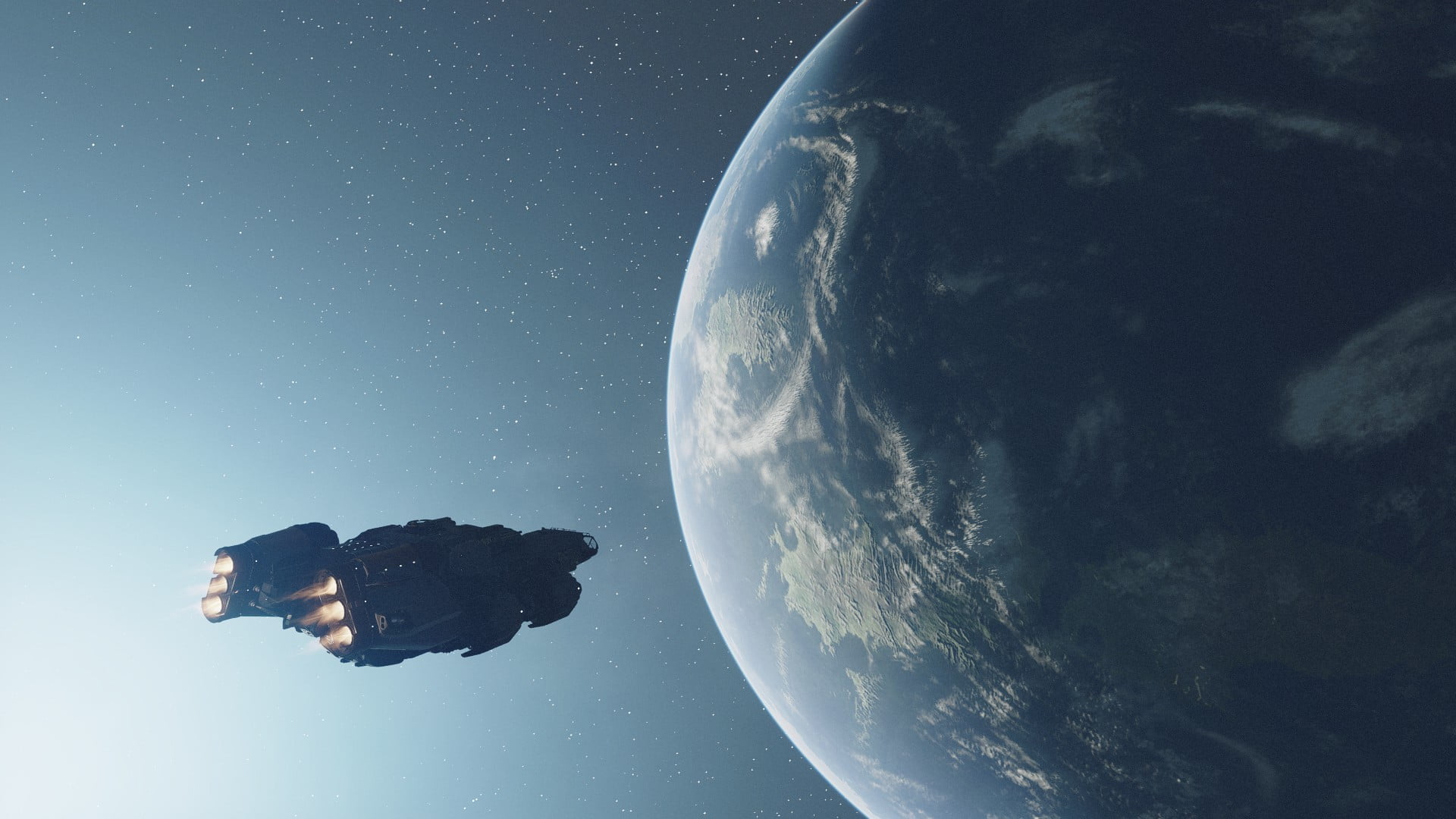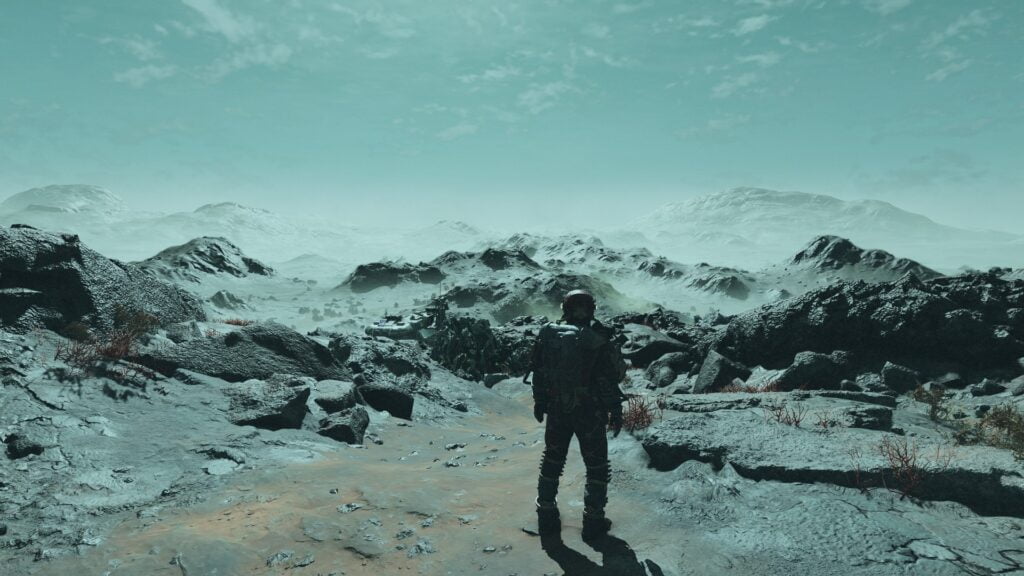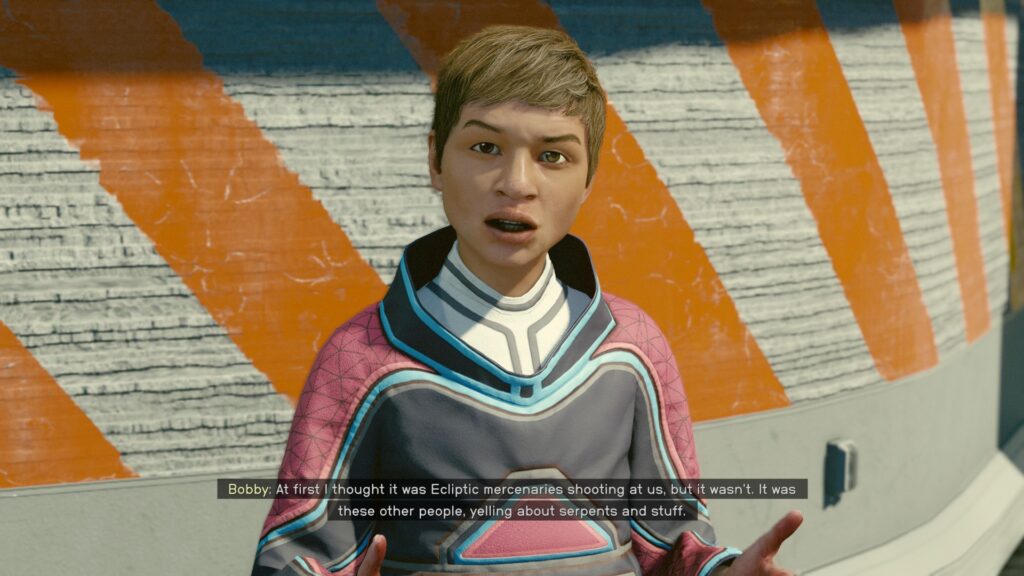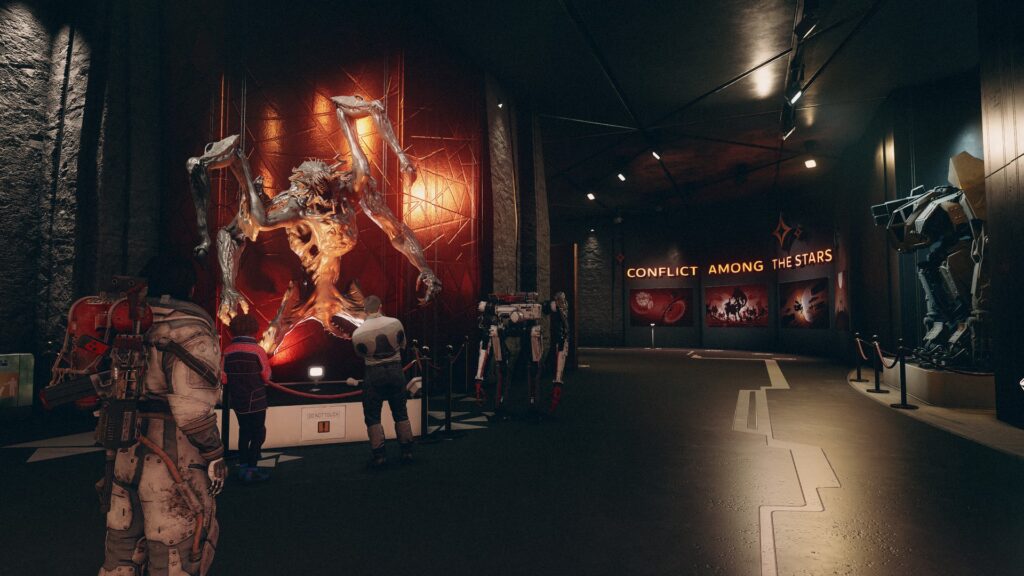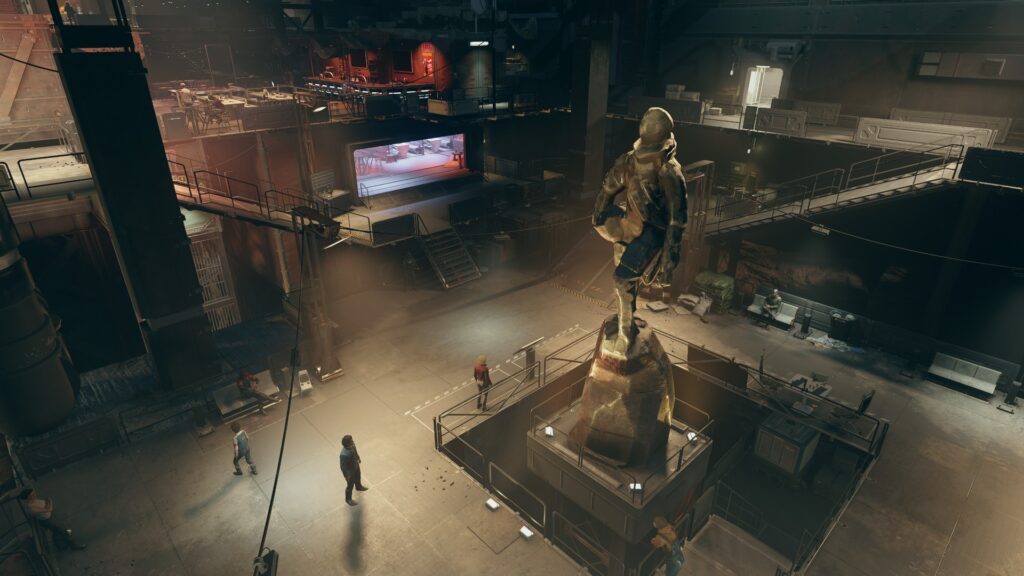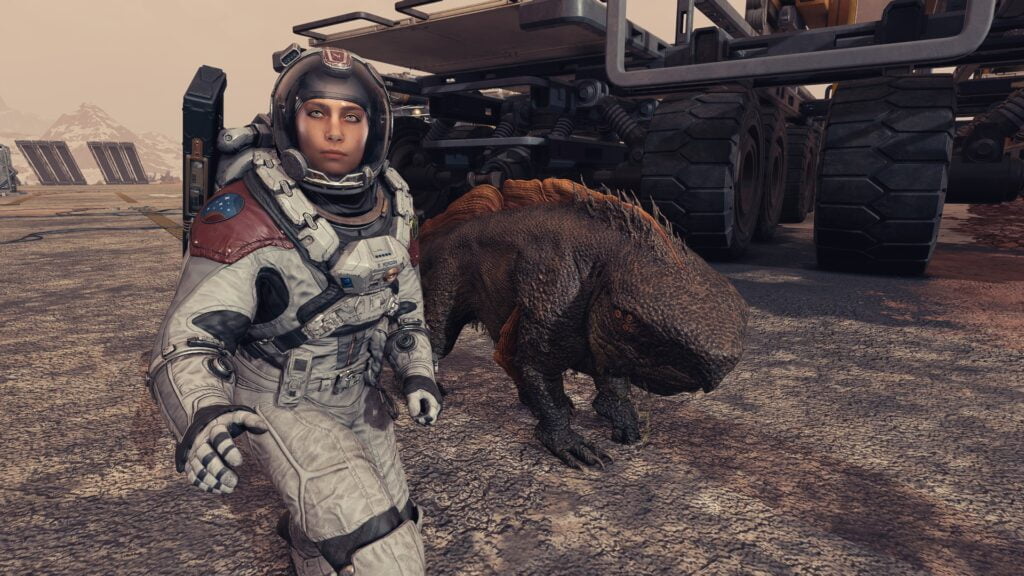Remember Daggerfall? The Elder Scrolls II: Daggerfall was released way back in 1996, as a sequel to the original The Elder Scrolls: Arena. It allowed you to explore two vast provinces of Tamriel, comprising some 15,000 cities, towns, and dungeons. It could take literally days of real time to walk across it. However, you wouldn’t necessarily want to explore that area though, since the vast majority of the map was created procedurally, with a lot of randomized layouts and world geometry devolving into endless, repetitive boredom. The key to a memorable open world, such as Skyrim or Fallout: New Vegas, comes in the thoughtful world design, where a team of designers have crafted unique locations and experiences for players to enjoy.
Starfield is Bethesda’s first new original game in over 30 years and is in some ways directly influenced by Daggerfall’s experimentation with procedural asset generation. It features approximately 1,000 planets, but many of these have been generated using procedural techniques to populate the surface of each planet with different types of terrain, and to potentially pepper a world with pre-selected locations which are available to explore. There is still hand-crafted content, and a lot of it, in the form of various towns and cities as well as mission-specific locations, but the amount of procedural content is the highest for any Bethesda game since Daggerfall.
Set in the year 2330, Starfield is set in a universe where humanity has not encountered any alien life of human-level intelligence, only animal equivalent. Earth still exists, but has been reduced to a lifeless husk as a result of the magnetosphere disintegrating and destroying the atmosphere. Humanity has conquered the stars and established colonies in various systems including Alpha Centauri. Three major factions vie for control of the Settled Systems: the United Colonies, who consider themselves as the true inheritors of Earth and the original successor state; the Freestar Collective, a more loosely affiliated confederation of worlds who operate a more Wild West aesthetic, and House Va’ruun, a theocratic faction who worship a deity called the Great Serpent, somewhat similar to Jörmungandr.
Starfield is an enormous game not just in the sheer amount of planets to visit, but also in the volume of things to do. The main plotline, starting you off as a lowly miner on a rocky moon who finds a mysterious artifact, is decent and filled with some fun characters, but it absolutely does not demand your immediate attention in the same way as the main story of Fallout 4 (where your child had been kidnapped and your partner murdered). The mysterious explorer group, Constellation, gives you your starting spaceship and grants you your initial companions, including robotic assistant Vasco and leader of the group, Englishwoman Sarah Morgan.
Sarah is friendly and personable, and motivated by her sense of wonder at constantly exploring the unknown. Other members of the group have their own motivations, including the wise-cracking Barrett and the billionaire Walter Stroud (voiced by the venerable Armin Shimerman, of Star Trek: Deep Space Nine and BioShock fame). Indeed, while the writing of the game might be fairly on-the-nose and not particularly enlightening, voice performances across the whole cast are strong, with the widest array of different voice actors yet seen in a Bethesda title, including a good assortment of regional accents (the museum curator of the Armistice Archives in the city of New Atlantis for example having a northern English accent).
Most of your time in Starfield will likely be spent doing quests. There are a host of minor quests, major faction quests, and a potentially infinite number of procedurally generated quests. Helpfully, it appears that any quest given to you by an NPC tends to have been hand-crafted, while those you receive from a mission board on a computer makes more use of procedural content. Each major city contains dozens of quests which can then spin out into lengthy stories in their own right, such as joining the volunteer space navy of the United Colonies, the Vanguard.
In typical Bethesda fashion you can make use of both hand-to-hand weaponry and a wide variety of futuristic guns. Much of the core gameplay from Fallout 4 has been retained, with the “explore-shoot-loot” cycle having been refined further, with improvements to the shooting mechanics being at the forefront. Unfortunately, the poorly organized inventory system of Skyrim and Fallout 4 has not seen any improvement in Starfield. Indeed, the entire menu system feels overcomplicated and clunky, requiring several clicks to properly navigate around the inventory, quest menu, system and galaxy map, as well as the ship management screen. Local maps, particularly of cities, are so useless they might as well not exist, since they just show a blank topographical overview of the area, and don’t include any paths, streets or buildings.
Another issue is the relatively high number of loading zones required to traverse the galaxy. While games like No Man’s Sky and Elite: Dangerous allow for seamless travel between space, space stations and the surface of planets, Starfield requires a brief loading screen between each. There are also loading screens while stepping into the interior of your ship, meaning that it can sometimes require six separate load screens to leave a planet, travel to another system and land on a new planet. After a system or planet is discovered it is then possible to fast travel directly to it, cutting out much of the interim journey.
This does, however, mean you miss exploring space, which although feeling disconnected from much of the rest of the game is where you can also get into some enjoyable spaceship fights with various groups of pirates, as well as a large assortment of random encounters, from distress calls to abandoned space stations, or a couple on holiday asking for directions. Flying the ship is fairly straightforward, and you can manage the amount of power distributed to each ship system, including weapons, engines and shields. There is also an extremely comprehensive starship creation tool, where you can purchase ships from various vendors and amend their layout to your desire, adding new rooms and decks, weapons and power grids.
As with Fallout 4, there’s plenty of base building, taking almost the entire system wholesale (including some of the same sound effects) while allowing you to build your bases up into little factories, harvesting the materials from the different worlds into a combined manufactory conglomerate. The RPG elements unfortunately remain extremely underdeveloped and simplified (especially when contrasted against something like Baldur’s Gate 3), essentially adopting the same system as Fallout 4, minus the SPECIAL system. Each level, you get one point which you can invest into your skills and abilities, gradually unlocking and bettering yourself. It means that it’s likely that in time, every character will become a jack-of-all-trades, with little opportunity for specialization or radically different playstyles.
On a technical level the PC version does have some issues at launch, although for a Bethesda game it’s far from the disaster of Fallout 76. There are no FOV or frame rate settings, with the frame rate struggling a lot of the time to maintain consistency, even if you have dynamic resolution enabled. This can lead to the feeling of like you’re running through mud, as busier environments struggle the most regularly. Visual fidelity is generally very good, particularly some of the environmental textures, the futuristic architecture quite reminiscent of Deus Ex: Mankind Divided. The new soundtrack from Inon Zur is also excellent, taking primary inspiration from his music for Fallout 4, but also has clear themes the soundtracks to films like Alien and other sci-fi masterworks.
Despite the slow start, disjointed load-zones, and preponderance of procedural content, Starfield does have an enjoyable atmosphere throughout, and a thoroughly sincere belief in the marvel of space exploration, similar to Star Trek. This is not Fallout 4 meets No Man Sky, but it is Fallout 4 meets Mass Effect; a more controlled and less simulation experience. Many of the cities are a joy to wander around, talking to characters and just learning about the various aspects of this new universe. In the basement of the MAST tower in the city of New Atlantis, the Vanguard Orientation Hall acts as an in-universe museum explaining the history of humanity’s expansion to the stars, and the background and fallout of the Colony War, which happened about 20 years prior to the game. The game is peppered with many places like this and many characters to converse with, and while the writing might be nothing special, it’s delivered with such sincerity you can’t help but be drawn in. Starfield is an enormous and impressive experience, but it struggles to make its myriad parts feel like a cohesive whole.

